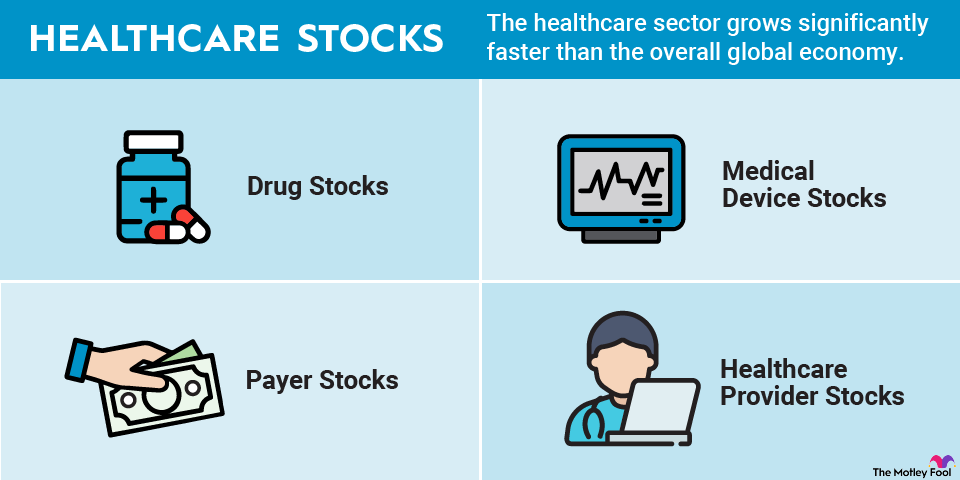Utility stocks are publicly traded companies that provide electricity, natural gas, and water services to customers. Utilities typically make stable investments. Demand for utility services tends to remain steady, even during a recession.
The rates utilities charge for delivering these services are either regulated (approved by a government entity) or contractually guaranteed (nonregulated). So, utilities generate reliable earnings, allowing them to pay dividends with above-average yields.

The combination of predictable profitability and income generation makes utility stocks lower-risk options for investors because they're less volatile. As a result, they're often ideal choices for retirement income strategies. That lower volatility also makes utilities more defensive, making them ideal holdings during uncertain economic times.
However, not all utility stocks deliver competitive investment returns. The best utilities share additional noteworthy characteristics that give them the power to outperform. With that in mind, here are some top utility stocks to buy and what to look for in a utility investment.
Three top utility stocks to buy
The best utility investments are companies with a top-notch financial profile and visible growth prospects. Each of the companies below meets those criteria and has the potential to produce above-average total stock returns -- dividend yield plus stock price appreciation.
| Name and ticker | Market cap | Dividend yield | Industry |
|---|---|---|---|
| American Water Works (NYSE:AWK) | $26.0 billion | 2.44% | Water Utilities |
| Brookfield Infrastructure (NYSE:BIPC) | $6.0 billion | 3.77% | Gas Utilities |
| NextEra Energy (NYSE:NEE) | $174.2 billion | 2.71% | Electric Utilities |
American Water Works

NYSE: AWK
Key Data Points
American Water Works is the largest publicly traded water and wastewater utility in the U.S. It makes most of its money by providing regulated water and wastewater services to retail, commercial, and industrial customers. The rest of its earnings come from less-predictable market-based activities, including providing water-related services to homeowners and the military.
American Water Works expects to grow its earnings per share (EPS) at a 7% to 9% compound annual rate over the long term, making it one of the fastest-growing utilities in the country. Driving that outlook is its plan to invest billions of dollars annually to expand its regulated water utility operations through capital investments and acquisitions.
The water utility has the financial flexibility to support its expansion plan thanks to its top-tier financial profile. It has an investment-grade credit rating, giving it the ability to borrow money at lower rates and better terms.
It also has a very conservative dividend payout ratio (it has targeted an average of between 50% and 60% of its adjusted EPS). Due to its strong financial profile, American Water Works forecasts dividend growth matching its earnings growth rate (7% to 9% annually). That would enable the utility to continue its dividend growth streak. It has raised its dividend every year since going public in 2008.
2. Brookfield Infrastructure

NYSE: BIPC
Key Data Points
Brookfield Infrastructure owns a diversified portfolio of utility-like infrastructure businesses, including:
- Utilities: Regulated electric and natural gas transmission and distribution businesses, smart meters, gas pipelines, electricity transmission lines, and residential decarbonization infrastructure
- Transport: Railroads, toll roads, ports, liquefied natural gas (LNG) export operations, and intermodal containers supported by long-term contracts or regulated rate structures
- Midstream: Oil and natural gas midstream assets backed by long-term contracts or regulated rates
- Data: Data centers, cell towers, fiber-optic networks, and data transmission assets supported by long-term contracts with customers
Brookfield Infrastructure operates several utilities and utility-like businesses that generate predictable cash flow that grows over time. The company benefits from inflation-linked rate escalations, higher volumes as the economy expands, and its ability to complete expansion projects.
Brookfield believes these organic growth drivers alone can support 5% to 9% annual dividend growth over the long term. It increased its dividend by another 6% in early 2025, its 16th straight year of growth.
In addition to organic growth, Brookfield anticipates that acquisitions can further boost its earnings each year. In 2025, the company agreed to invest $2.1 billion into a leading refined products pipeline system, bulk fiber provider, railcar leasing platform, and industrial gas business. These businesses generate very stable utility-like cash flows backed by government-regulated rate structures and long-term contracts to support Brookfield's growing dividend. When added to its organic growth drivers, acquisitions can help fuel 10%+ annual funds from operations (FFO) per share growth in the coming years.
Brookfield Infrastructure sees ample opportunities to expand its infrastructure platform in the coming years. That should enable the company to continue increasing its high-yielding dividend. These growth drivers should give it the power to produce attractive total returns in the coming years.

3. NextEra Energy

NYSE: NEE
Key Data Points
NextEra Energy operates a regulated electric utility in Florida. It also owns and operates natural gas pipelines, electricity transmission lines, and renewable energy projects that generate predictable income backed by long-term, fixed-rate contracts. These businesses supply NextEra with steady cash flow to support its dividend and invest in expanding its utility business.
NextEra is investing billions of dollars in expanding its utility operations and clean energy business. The utility unveiled its Real Zero strategy to eliminate carbon emissions from its operations by 2045, which should be a major long-term growth driver.
In the near term, the company expects its investments to boost its EPS at or near the high end of its 6% to 8% annual target range through 2027. That's faster than the EPS growth rate projections of its largest peers in the electric utilities sector, which are in the low- to mid-single digits.
Another factor helping power above-average growth is NextEra's strong financial profile, which gives it the flexibility to fund its investments. Its profile includes one of the highest credit ratings among large rate-regulated electric utility companies and a dividend payout ratio that's historically been less than the sector average. Due to its lower payout ratio, NextEra plans to increase its dividend by roughly 10% annually through at least 2026.
Utilities need a strong financial profile to maintain and expand infrastructure while also paying an attractive dividend.
Pros and cons of investing in utility stocks
Investing in utilities has its benefits and drawbacks. Some of the pros include:
- Above-average dividend income.
- Lower volatility.
- Predictable revenue and earnings.
- Steady growth.
- Recession-resilient investment.
Meanwhile, some of the cons of investing in utility stocks are:
- Slower growth.
- Lower return potential.
- Higher debt levels.
- More sensitive to changes in interest rates.
- Regulatory risks.
What makes a good utility stock investment?
Utility infrastructure is costly to build and maintain. Utilities need a strong financial profile to maintain and expand infrastructure while also paying an attractive dividend. These three metrics can help you gauge a utility's financial strength:
An investment-grade bond rating
A bond rating or credit rating for a company is like a credit score for an individual. Companies with higher investment-grade bond ratings can borrow money at lower rates and on easier terms.
That's important for utilities since they routinely need to borrow money to help fund maintenance and expansion projects. Investors should seek companies with high bond ratings since they can more easily finance their operations, which helps them increase their earnings and dividends.
Low leverage metrics
While utilities must borrow money to finance their operations, too much debt can limit their ability to grow. Investors should look for utilities with conservative leverage ratios for the sector.
Two notable ones are debt-to-earnings before interest, taxes, depreciation, and amortization, or EBITDA (debt in relation to income), and debt-to-total capital (debt in relation to total value). Good targets for the sector are a debt-to-EBITDA ratio of less than 4.5 times and a debt-to-capital value of less than 60%.
A conservative dividend payout ratio
A dividend payout ratio is the percentage of a company's profits paid to investors via its dividends. Utilities traditionally have higher dividend payout ratios than other companies. Most target a payout ratio between 60% to 70% of their earnings, much more than the 40% average of higher-yielding stocks in the S&P 500.
However, utilities with a relatively lower payout retain more cash to reinvest in expansion projects. Consequently, they don't need to borrow as much money (which would lower their credit rating) or issue as many new shares (which would dilute existing investors' shares of their profits) to finance growth.
Utilities with stronger financial profiles have greater flexibility to invest in expansion projects and make acquisitions, positioning them to expand their earnings at an above-average rate. The extra fiscal strength also gives them more power to increase their dividends.
How to invest in utility stocks
Anyone can invest in utility stocks. Here's a step-by-step guide on how to add one to your portfolio:
- Open your brokerage app: Log in to your brokerage account where you handle your investments.
- Search for the stock: Enter the ticker or company name into the search bar to bring up the stock's trading page.
- Decide how many shares to buy: Consider your investment goals and how much of your portfolio you want to allocate to this stock.
- Select order type: Choose between a market order to buy at the current price or a limit order to specify the maximum price you're willing to pay.
- Submit your order: Confirm the details and submit your buy order.
- Review your purchase: Check your portfolio to ensure your order was filled as expected and adjust your investment strategy accordingly.
Related investing topics
The best utility stocks offer above-average growth for less risk
These utility companies all have top-tier financial profiles. As a result, they have the flexibility to expand operations while also increasing their dividends. Utility stocks with dual growth drivers have the power to produce attractive total returns for investors over the long term. That makes them stand out as excellent investments.
Given the resilient demand for their services, their rate structures, and their long-term investment programs, top-tier utilities should be able to continue increasing their earnings even if the economy slows in the future. That makes adding a utility to your portfolio a smart investment if you're seeking to benefit from its income and stable growth profile.








